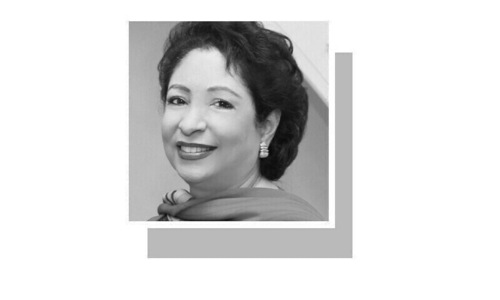KARACHI: Though there has not been any significant rise in the use of contraceptives over the past five years, statistics show birth rate has declined mainly because of abortion, which is being increasingly used as a family planning tool in the country, a speaker pointed this out at a media workshop held here on Monday.
The programme aimed at making journalists understand the need for proper coverage of reproductive health issues as well as familiarising them with maternal health situation was organised by the National Committee on Maternal and Neonatal Health (NCMNH) in collaboration with the Population Council and Research and Advocacy Fund.
“Birth rate has dropped (from 4.1pc in 2006-07 to 3.8pc in 2012-13) but there has been no major increase in the number of persons using contraceptives (35pc). This shows the abortion is being used as a family planning tool. And the major reason behind low prevalence of contraceptive use is not the religious mindset but rather lack of awareness. Most women don’t even know where to go,” said president of Midwifery Association of Pakistan and senior member of NCMNH Imtiaz Kamal.
Misconceptions about contraceptives use and lack of family support, she said, had also been identified as important factors which prevented people from using contraceptives. “No maternal complication is graver than abortion,” she added.
Earlier, senior gynaecologist and president of NCMNH Dr Sadiqua Jafarey gave a presentation based on the Pakistan Demographic Health Surveys of 2006-07 and 2012-13 according to which the country had about 50 million women in the reproductive age group (15 to 49 years). Of them, she said, 30m aged less than 15 years.
Comparing the maternal and child health data in the two surveys, she said that though there was no significant change, things had not gone from bad to worse. Still, 24pc women received no antenatal care while only 52pc had access to skilled service provider. Consequently, the maternal mortality rate stood at 276 per 100,000 live births and infant mortality rate at 74 per 1,000 live births.
“What works for reducing maternal mortality is pretty well documented. All we need is willingness on part of the government,” she said while referring to countries like Sri Lanka, Thailand and Malaysia where governments had greatly improved maternal and child health indicators by ensuring that every pregnant woman had access to skilled birth attendant, emergency obstetric care and family planning facilities.
The presentation was followed by a discussion with journalists in which medical experts criticised the way the media, especially the electronic media, was reporting on reproductive health issues.
The coverage in many cases, they said, was one-sided and in one particular case, maligned the reputation of a reproductive health facility being run by an NGO.
They cited research data which showed 98 per cent of women seeking abortion were married with children. They were uneducated and belonged to poor families while their husbands were very much on board in the decision.
“We need to promote family planning education and tools so there are no unintended pregnancies and, if there is, the woman should have access to safe abortion, else, she will go to unskilled service providers,” said Dr Azra Ahsan, one of the panelists, adding that unsafe abortion was a major reason for maternal deaths and the religion and law allowed the procedure under certain conditions.
Most workshop participants agreed that though journalists had the right to do investigative reporting, they must not be judgmental in cases in which women sought abortion.
Sharing the findings of the Population Council studies on abortion and post abortion care, Dr Gul Rashida said that data showed that around 900,000 abortions occurred in the country annually.
Of them 700,000 women sought treatment for post-abortion care. Sixty-two per cent medical personnel had negative attitude towards post-abortion care and 43pc hesitated in treating women with induced abortion.
Journalists Hilda Saeed and Imran Shirwani also spoke.












































